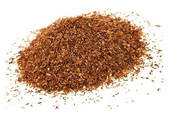Barley water is a simple drink that has many health benefits, but it's best known for it's ability to detox the body and flush out the toxins and aid in digestion. Barley water is nothing new and has been enjoyed in England and Asia as a hot beverage like tea. Many other countries also enjoy it cold as a summer drink to help reduce the body temperature.
The Mayo Clinic recommends barley as a source of soluble fiber. Which most of us could use. I have started drinking barley water a couple times a week but I boil the barley and strain out the barley and just drink the water. I then use the barley in other ways. You may also blend the cooked barley with the water to make a thicker drink. This certainly will contain higher amounts of digestive fiber and more calories. If you choose to use this method be mindful of the higher amounts of fiber and calories you are consuming.
Vitamins: Barley also have several vitamins B1 (thiamin) and vitamin B3 (niacin). The B vitamins are needed for a healthy nervous system, proper liver function and great for your skin, hair, and eyes. The other important vitamins in barley are choline, pantothenic acid, riboflavin, and vitamins A, K, B6 and B12.
Minerals: Barley contains minerals like selenium, iron, magnesium, zinc, phosphorus, and copper. Selenium, along with vitamin E, protects the cell membranes from deterioration and aids normal thyroid function. Copper and iron play an important role in the formation of bone and cartilage.
Antioxidants: Barley also contains antioxidants That slow down the rate of oxidative damage by the free radicals.
Phytochemicals: Phytochemicals are natural plant-based chemicals that decrease the risk of heart disease, diabetes, and cancer. Being a plant source, barley is said to contain these phytochemicals.
Low Glycemic Index: The glycemic index of boiled pearled barley is 35, which is the lowest among all the common cereal grains. Making it a great carbohydrate choice for diabetics or dieters who are recommended a low glycemic meal plan.
- 1T. barley
- 1 - 2 cup water
- Boil for 15 minutes or until the barley is soft.
- Strain out the barley and top off the water back up to 1 cup - cool
- Use the cooked barley on my salad for lunch
Recipe: Cooked Barley Water - Serves: 4 cups
Ingredients
- 1 cup organic Pearl Barley
- 5 cups water
- Juice of ½ - 1 lemon (to taste, or other fruit if preferred)
- 1 tablespoon raw honey (optional to taste)
- Cinnamon stick (optional)
- Fresh ginger root (optional, to taste)
Instructions
- Wash the Pearl Barley and soak it in water for at least an hour.
- Place the Pearl Barley, water, ginger and cinnamon in a pan. Switch the heat on.
- Boil it and then simmer for 20-25 minutes with the lid off. This will reduce the amount of water by about ⅓. The grains should be softened and cooked.
- Switch off, strain and add a few drops of lemon juice to the water (you can alternate with mint leaves, orange or lime juice, maple syrup, other herbs and spices etc.). Set cooked barley aside.
- Add honey to taste, stir and leave to cool. Now your homemade barley water is ready!
Notes
It is best to drink it on the day of making. It can also be refrigerated in an airtight container for up to 3 days.
Ingredients
- 1 cup organic Pearl Barley
- 5 cups water
- Juice of ½ - 1 lemon (to taste, or other fruit if preferred)
- 1 tablespoon raw honey (optional to taste)
- Cinnamon stick (optional)
- Fresh ginger root (optional, to taste)
- Place all of the above ingredients into a large glass jug and cover with a breathable lid or kitchen towel.
- Stir the mixture and let it sit for 24 hours.
- Strain and serve.
- Bulking out and thickening soups and stews.
- Combining with chopped nuts, seeds, raisins and other dried fruits for an alternative to muesli or porridge. This has natural sweeteners and is high in dietary fiber.
- Added to salads for taste and texture.
- Pop it in your blender and use it as a thickener for your smoothies.
Fit for Live TV, 9 Benefits of Barley Water, by Anitha Gomathy
foodndtv.com, 5 Amazing Barley Water Benefits, by Plavaneeta Borah
http://www.stylecraze.com - 25 Benefits of Barley


 RSS Feed
RSS Feed
